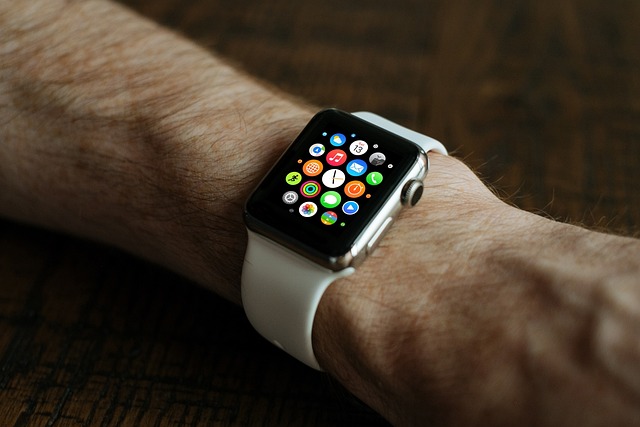If your Apple Watch is frequently requiring charges, displaying diminished battery life, or showing signs of physical wear such as scratches and dents that affect its functionality, it's advisable to consider a battery replacement. A degraded battery not only causes inconvenience by necessitating more frequent charging but can also impact the Apple Watch's performance. Regular battery replacements are crucial for maintaining device health and ensuring optimal functionality. For instances where touchscreen responsiveness is compromised, which can affect core features like timekeeping, notifications, app usage, and health tracking, a battery replacement service is often the solution to restore the watch's efficiency. Additionally, if you encounter persistent connectivity issues that software updates and basic troubleshooting steps cannot resolve, a hardware issue such as a depleted battery or other faulty components may be at play. In these cases, authorized Apple repair centers can provide professional assistance, including thorough diagnostics and necessary repairs to address hardware malfunctions and improve device performance. Replacing the Apple Watch battery is a recommended step to keep your device reliable and performing its best, which is essential for daily use and long-term value retention. Regular maintenance using genuine Apple Watch batteries is key to ensuring your watch operates smoothly and remains a consistent asset for smartwatch requirements.
When your Apple Watch becomes a chronically sluggish companion, it might be time to consider a replacement. This guide delves into the signs that signal your device’s battery may have run its course, from recurring drains to persistent software glitches. We also explore the physical cues like scratches and dents that tell their own story of wear and tear. Whether it’s a touchscreen that stops responding or connectivity issues that disrupt your digital life, learning to interpret these symptoms can save you from future mishaps. Understanding when to replace Apple Watch battery is key to maintaining its efficiency and reliability.
- Recurring Battery Drain: Understanding When It's Time to Replace Apple Watch Battery
- Visible Scratches and Dents on the Screen or Back: Assessing Physical Wear and Tear
- Unresponsive Touchscreen: The Impact of a Faulty Display on Usability
- Poor Connectivity Issues: Troubleshooting Bluetooth and Wi-Fi Problems in Your Apple Watch
- Software Malfunctions: Identifying Glitches That Indicate Battery or Hardware Failure
Recurring Battery Drain: Understanding When It's Time to Replace Apple Watch Battery

When your Apple Watch begins to experience frequent battery drains, it may be a sign that the battery is nearing the end of its lifespan and requires replacement. Apple Watches, known for their impressive longevity, are designed to provide all-day battery life under typical use. However, over time, the rechargeable lithium-ion polymer battery within the device can degrade, leading to shorter operational periods between charges. If you notice that your watch consistently needs charging midday or no longer holds a charge as it once did, this could be an indication that it’s time to replace the Apple Watch battery. Regular battery drain issues are not just inconvenient; they can also affect the performance and functionality of your device. To prolong the life of your Apple Watch and ensure optimal operation, addressing early signs of battery degradation promptly is crucial. It’s advisable to consider battery replacement when such patterns persist after full charges or if you’ve noticed a significant drop in battery life without a change in usage habits. With professional service from an authorized Apple repair center, your watch can regain its original performance and reliability, making the process of replacing an Apple Watch battery a worthwhile investment for any enthusiast or user relying on this smart device for daily activities.
Visible Scratches and Dents on the Screen or Back: Assessing Physical Wear and Tear

If your Apple Watch has accumulated visible scratches and dents on its screen or back, it may be more than just a cosmetic issue. Over time, these imperfections can compromise the integrity of the watch’s structure and function. While minor nicks and marks are almost inevitable with wear, excessive damage can affect the watch’s performance and aesthetics. For instance, scratches on the screen can interfere with touch sensitivity and clarity, making it harder to interact with your device. Similarly, dents on the back can disrupt the seal, potentially leading to moisture ingress, which could short-circuit internal components or cause the battery to swell and deform. Regular maintenance, such as replace Apple Watch battery services, can mitigate some of these issues, but structural damage often necessitates a full replacement. It’s crucial to regularly inspect your watch for signs of wear and tear, ensuring that any physical damage is addressed promptly to maintain its functionality and appearance. If you notice significant scratches or dents, it might be time to consider replacing your Apple Watch rather than simply addressing the battery. This proactive approach can ensure that your device operates at optimal conditions and retains its value over time.
Unresponsive Touchscreen: The Impact of a Faulty Display on Usability

When the touchscreen of your Apple Watch becomes unresponsive, it can significantly hinder your ability to interact with the device, rendering it less functional and more of a decorative piece on your wrist. This issue often stems from a faulty display or a battery that’s lost its charge-retaining capability, which can be a sign that it’s time to replace Apple Watch battery. The watch’s touchscreen is integral to its usability; from checking the time and notifications to launching apps and tracking health metrics, the touch interface is central to the user experience. A malfunctioning display not only disrupts these interactions but can also lead to missed calls, messages, and important alerts. If you find yourself experiencing frequent touchscreen inaccuracies or complete unresponsiveness, it’s advisable to consider a battery replacement. This procedure not only revitalizes the watch’s responsiveness but also ensures that the display operates at peak efficiency, allowing you to seamlessly integrate the device into your daily routine once again. Regular maintenance and timely replacements of components like the battery can enhance the longevity and performance of your Apple Watch, keeping it a reliable companion for all your smartwatch needs.
Poor Connectivity Issues: Troubleshooting Bluetooth and Wi-Fi Problems in Your Apple Watch

If your Apple Watch is experiencing persistent connectivity issues, it may be time to consider a battery replacement or other diagnostic checks. Bluetooth and Wi-Fi are integral components for the seamless functionality of your Apple Watch, enabling it to stay synced with your iPhone and connected to the internet. When these connections falter, it could be a sign that the watch’s hardware is underperforming. Poor signal strength, frequent disconnections, or an inability to pair with other devices are symptoms that should not be overlooked. Before jumping to a full replacement, however, attempt to resolve these issues by ensuring your Apple Watch software is up-to-date, the watch and iPhone are close enough for Bluetooth to function effectively, and you’re within range of a Wi-Fi network. Restarting both devices can also clear any temporary glitches that might be causing connectivity problems. If troubleshooting steps fail to restore stable connections, it may be necessary to replace the Apple Watch battery or address other hardware malfunctions. This can be done at an authorized service provider or Apple Store, where a professional can diagnose and perform the necessary repair. Regular battery replacement can help maintain optimal performance and extend the lifespan of your Apple Watch.
Software Malfunctions: Identifying Glitches That Indicate Battery or Hardware Failure

When your Apple Watch starts displaying anomalies such as erratic timekeeping, unresponsive touch screen, or frequent software crashes, it may be more than just a minor hiccup. These symptoms can often be indicative of either battery depletion or hardware malfunction. If you’ve noticed your device’s software behaving unexpectedly—like failing to keep accurate time or having apps close without warning—consider that the battery might be nearing the end of its lifecycle. A weak battery can cause unpredictable behavior in both the hardware and software components of your Apple Watch, leading to a less reliable user experience. In such cases, replacing the apple watch battery is often the most efficient solution. It not only resolves the immediate issues but also prevents potential data loss or further hardware damage that could result from continued use with a compromised power source. Additionally, if your Apple Watch is unresponsive to touch inputs or struggles to charge properly, these are clear signs that it’s time for a battery replacement. A professional technician can diagnose the issue accurately and perform the necessary service to restore your Apple Watch’s performance and functionality. Regularly servicing your device with genuine apple watch batteries ensures optimal operation and longevity of your investment.
When your trusted timepiece, an Apple Watch, begins to exhibit signs of wear and tear, or its performance dips due to software glitches or poor connectivity, it’s a clear indication that replacement might be imminent. Whether it’s the battery draining too quickly, visible marks on the screen or back, or an unresponsive touchscreen, these issues can significantly affect your watch’s functionality and aesthetics. It’s crucial to address such concerns promptly to maintain both the device’s appearance and its operational efficiency. If you’ve been noticing these signs—recurrent battery drain, physical wear and tear, touchscreen unresponsiveness, or connectivity hiccups—it may well be time to replace your Apple Watch battery or even the entire device. Considering the importance of reliability and performance in a smartwatch, ensuring your device is up to par can make all the difference in keeping up with your daily activities and staying connected. Remember, proactive maintenance can extend your watch’s lifespan and enhance your user experience.
